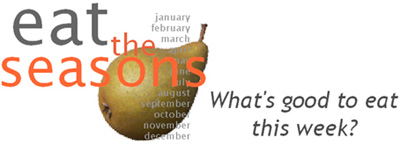
•
UK/Ireland
Canada/USA
________________________________________________________________________

eat
SWEETCORN
It seems that all food
writers are required, at one time or another, to wax lyrical about the
delights of a particular humble ingredient prepared in the simplest fashion.
Now it's our turn.
For us, a just-boiled corn on the cob, speckled with freshly milled black pepper and rolled in melted butter is simply one of the greatest eating experiences available. Tinned or frozen sweetcorn can be tasty enough, but it doesn't compare to corn eaten straight from the cob when the crisp and succulent kernels explode with flavour in the mouth. There's no other food that regularly leaves us with a burnt mouth because we can't wait for it to reach a reasonable temperature before tucking in.
If you fancy being a bit more creative, we've listed a number of alternatives to the basic corn on the cob treatment (see PICK OF THE RECIPES). But really, why bother?
HISTORY
Sweetcorn is a form of maize that has been cultivated since the nineteenth century. Maize (known as corn in the USA and elsewhere) has been an important foodstuff for thousands of years. It was eaten by Mexican and central American cultures as early as 3,400 B.C. and fuelled the Aztec Empire as well as the Mayan and the Inca civilizations.
It is widely thought that the Spanish brought maize back to Europe in the fifteenth century from where it then spread to east Asia and Africa. However this view does not go unchallenged and there is some evidence in support of an alternate theory (with far-reaching consequences for historians) that maize actually spread west from the Americas to Asia before its spread eastwards from Europe.
Sweetcorn gathered popularity in the UK after World War II and is now grown extensively across southern England.
BIOLOGY
Sweetcorn, a grass, is a form of the cereal crop maize (Zea mays), harvested at a young age while the kernels are tender and sweet. A corn ear is an inflorescence (cluster of flowers around a stem) and the kernels are the fruit of the plant (more specifically a grain).
NUTRITION
Sweetcorn provides useful amounts of vitamins A, B3 (supports metabolism, the nervous and digestive systems) and C. It also contains folic acid and fibre.
TIPS
BUYING
Look for cobs with the husk intact. The husk should be green and fresh
and conceal fine, silky threads. Kernels should be tightly packed, plump
and smaller at the tips than in the middle (indicating young cobs). If
buying from a market try to shop earlier in the day and avoid buying sweetcorn
that has been sitting in warm sun - the rate at which the sugars are turned
to starch increases rapidly with temperature.
STORING
After picking, the sugars in sweetcorn began turning to starch at a pace.
As the point of sweetcorn is that it's sweet, keep sweetcorn cool and
eat as soon as possible after picking - on the same day as purchase where
possible. If keeping for more than a day, parboil the corn for a minute
(this will help slow down the conversion of sugars) before refrigerating
or freezing.
PREPARING
To boil, strip the husk and silk and trim the stems. Cook in unsalted
boiling water (salt will toughen the kernels) until the sweetcorn yields
to a fork tip (anything from 3 to 10 minutes or more, depending on the
condition of the corn). Season after cooking.
To barbecue, soak the whole corn, with husks, in water for 10 minutes before cooking in the embers or over a moderate heat for 15 minutes or more, until toasted. Alternatively, soak the corn and remove the husk before brushing with a little oil and grilling.
To remove kernels from a corn cob, trim one end to produce a flat surface, stand the corn vertically on the flat end and cut down the length of the cob at the base of the kernels. Turn the cob and repeat until all kernels have been stripped. This is much easier to do after cooking.
OTHER STUFF
If you were wondering where to buy a 6m high inflatable corn on the cob, look no further...
PICK OF THE RECIPES
in
season:
january
february
march
april
may
june
july
august
september
october
november
december
Central London
locale
Pastry, pasta,
puds and lots more!
Fun and deliciously
different
www.cookeryschool.co.uk

A
contract catering
company that puts
quality and freshness first
www.artizian.co.uk
ONLINE
IN PRINT
-
Prawn, Potato and Corn Chowder
Bowl Food -
Toasted Sweetcorn Salsa
Delia's Summer Collection -
Barbecued Sweetcorn with Thyme Butter or Chilli Jam
Sarah Raven's Garden Cookbook
© 2004-2010 eat the seasons | contact @ eattheseasons.co.uk | about